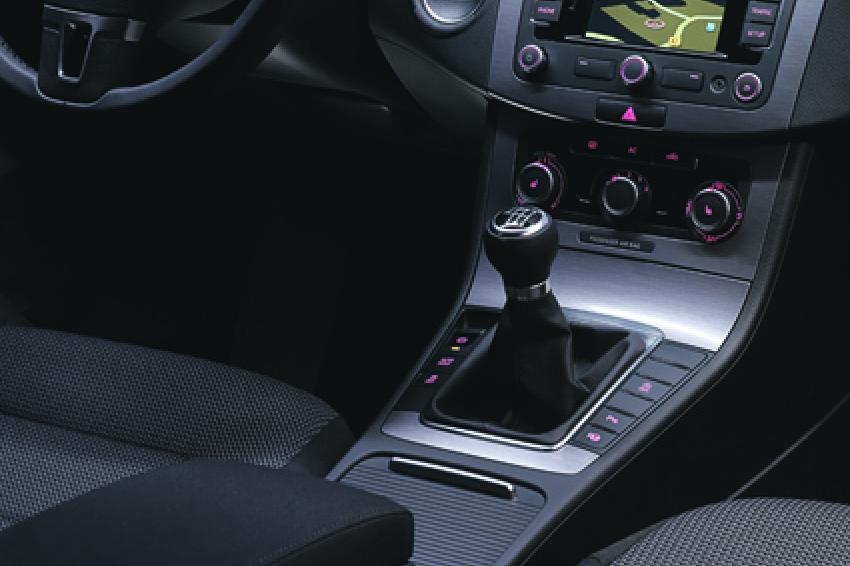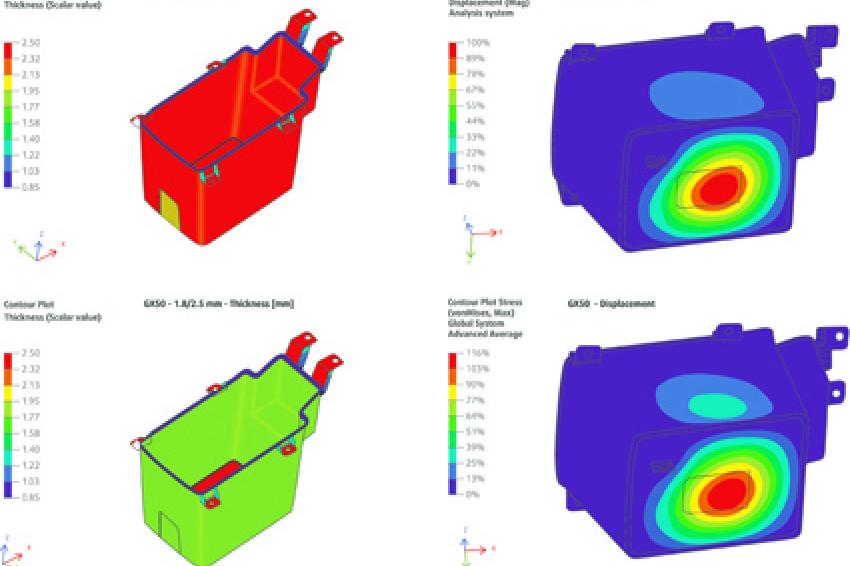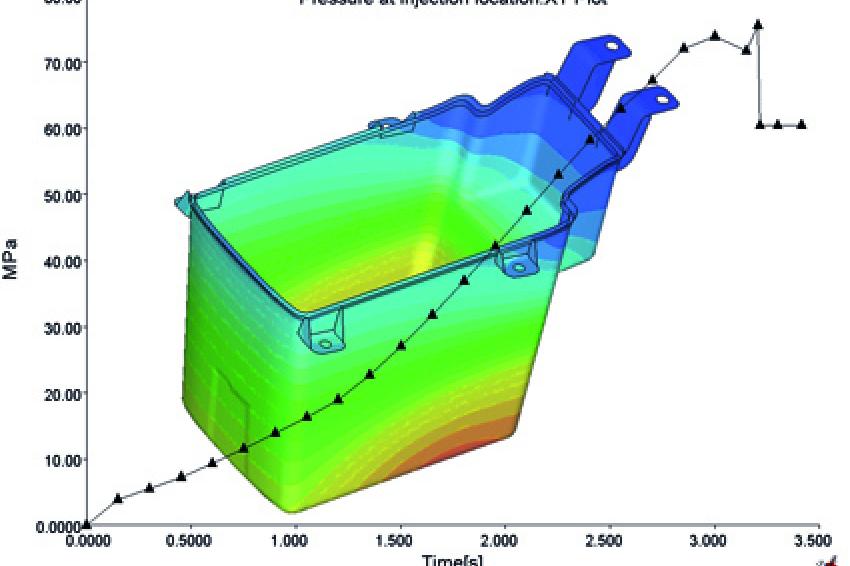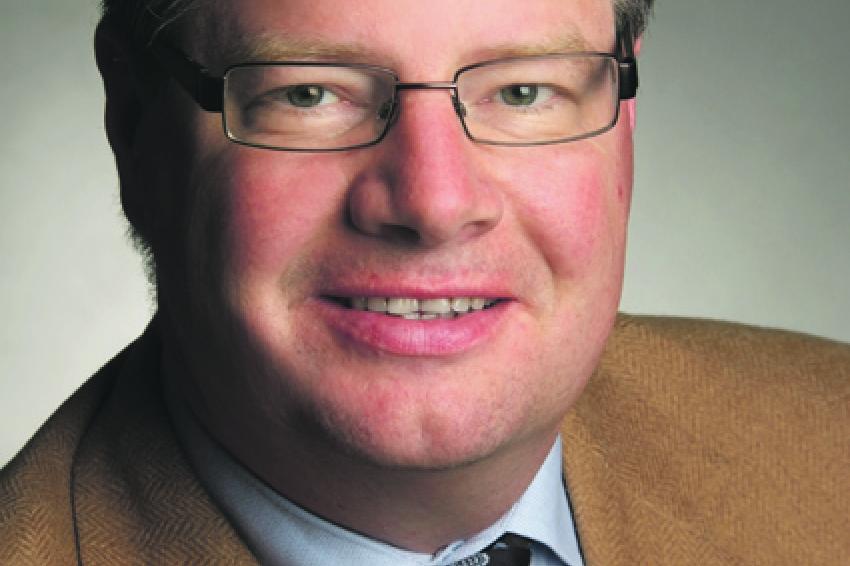Simulation as the Cornerstone of Next Generation Weight Reduction for the Automotive Industry
Modern Engineering Tools
Computer Aided Engineering - Sustainability has been a major driver of innovation for decades in the automotive industry and will continue to be so for the foreseeable future. Today, the emphasis on fuel economy is forcing automakers to make significant changes in materials selection and even in the engineering methodology behind the vehicle's design.
Due to the inherent relationship between mass and fuel consumption, lightweighting of vehicles is a key area to address in order to meet those requirements. Studies show that 10% mass reduction relates to a 3% to 7% benefit in fuel consumption depending on the type of car and the driving cycle used. On average a weight reduction of 100 kg, reduces the CO2 emission by 10g/km. However, weight reduction often comes with a cost penalty. As a rule of thumb the industry uses a benefit of max €5 per kg gained. Therefore, more and more car manufacturers work closely with their material suppliers to look at how Computer Aided Engineering (CAE) can further optimize their designs. When the ultimate goal is to reduce weight and this downgauging trend coincides with reducing costs, OEMs are eager to know more. It is becoming a growing trend that requires thorough understanding of material properties and behaviour whereby the material supplier can play a key role.
Growing Need of OEMs for Lightweight Solutions
Styron clearly feels this increasing need to reduce weight in existing applications with the major brands in the automotive industry. Styron's R&D and Engineering departments often develop virtual prototypes using Computer Aided Design (CAD) and Computer Aided Engineering tools. Using the customer's CAD data in simulations, Styron can predict the behaviour of the selected polymer and recommend further optimization of the incumbent material in the production process and/or the part design. Simulation and modelling services can range from concept design, via process simulation of the material's conversion process up to structural simulations to tackle the most severe product requirements the customer is faced with. Dagmar van Heur, Vice President Automotive explains: "Using these software tools, we are able to define process parameters for materials, provide ideas on their application in the OEM part designs and demonstrate how the end product will perform and how it can be improved. This is part of our core business and offering towards our strategic customers."
Relationships that Create Value
The collaboration between car manufacturer and material supplier is of the utmost value to stay abreast with the latest technical trends. Styron builds a two-way relationship with the customer in which the latter consults Styron for solutions, and Styron engages him with the material concepts. Dagmar van Heur explains: "Whereas in the past, plastic was being looked at to replace steel components to further reduce weight, we now see a growing demand from customers for simulation modelling techniques to study all behavioural characteristics of the selected resin in the application. In close collaboration with our engineering department there is often still room to further improve the structure or the process behind the production of the finished part. These days greater emphasis is thus placed on Computer Aided Engineering at all stages of design and development where Styron has supported several customers with creating additional weight reductions of existing plastic parts."
Creating Weight Reduction by Using the Same Material
One of Styron's customers wanted to investigate whether they could further downgauge the mid-console storage compartment that was made with Styron material. Styron conducted extensive simulations on the part combining structural performance with process simulation. Ultimately, Styron was able to create a weight reduction of 25-35% by adapting the wall thickness of the vertical walls of the storage compartment.
Step 1: Structural simulation
When keeping the same original thickness for the bottom of the part and reducing the sides to 1.8 mm, the deformation and stresses have similar values for the required load working on the center of the bottom of the part.
Step 2: Process simulation
To ensure the processability of the final thin walled part, the injection moulding process is simulated, using the polymer's characteristics.
Creating Weight Reduction by Using a Different Material
The baseline design of an overhead console made with Pulse 2100LG was analysed using 3D CAD data supplied by the customer. In a preliminary stage the material was replaced by the new Pulse GX50. As the original overhead console has a total mass of 3kg PC/ABS and the Pulse GX50 resin having a density of 1.09 compared to 1.13 for the Pulse 2100LG , the exact same part could be made weighing 2.895 kg, resulting in a reduction of 3.5%.
Furthermore, the high structural performance of the Pulse GX50 also allowed for thin walling the part. To project the exact performance of the part, the CAD data together with in- house computer simulation expertise proved to be of utmost importance. Simulation allowed for reducing the nominal wall thickness to 2.5 mm saving a volume of 443cmᶟ (-16.7%), while at the same time safeguarding the processability of the part.
As a result, Styron was able to reduce the total part weight by 0.59 kg (19.7%). On top of the reduced material contents, an additional cost saving was achieved due to the material's lower density. In terms of resin cost this also lead to significant cost savings in comparison to the original part. The example proves that by working closely with your resin supplier, car manufacturers can deliver lighter, more sustainable solutions while saving out of pocket costs.
Looking Forward
Today it is about optimizing parts already developed with plastics materials. In the future the automotive industry will further investigate the possibilities to replace structural parts with plastic components, creating new opportunities for polymer producers. Dagmar van Heur adds: "The next step will be to replace structural parts, currently mainly produced using metals, with plastic materials. This will require an even closer collaboration between the material producer and the design department of the OEM. Design and material choice are two different technological domains that are strongly related but in the future they will become even more interconnected."








